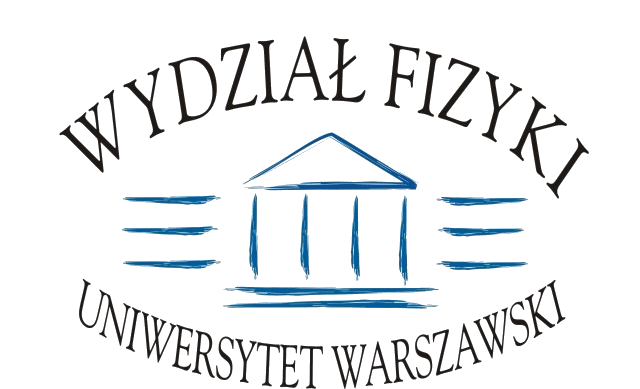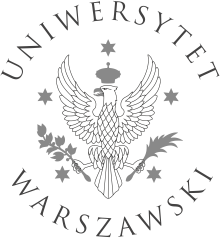Seminarium Kosmologia i Fizyka Cząstek
2006/2007 | 2007/2008 | 2008/2009 | 2009/2010 | 2010/2011 | 2011/2012 | 2012/2013 | 2013/2014 | 2014/2015 | 2015/2016 | 2016/2017
2015-03-24 (Wtorek)
Sebastian Trojanowski and Krzysztof Turzyński (NCBJ Warszawa and IFT UW)
Supersymmetric dark matter with low reheating temperature
I will examine the relic abundance of supersymmetric dark matter in a scenario where the reheating temperature T_R of the Universe after inflation is low, in the range of tens or of hundreds of GeV. To this end I will solve the Boltzmann equation during and after the period of reheating. I will consider several candidates for the lightest supersymmetric particle (LSP) as a dark matter candidate. In the case of the neutralino LSP, large new regions of parameter space open up, depending on the value of reheating temperature. Gravitino and axino as dark matter in a low T_R regime will be also presented.
2015-03-17 (Wtorek)
Ioannis Dalianis (NTUA Athens)
Features and implications of the plateau inflationary potentials
After the last Planck CMB data the plateau potentials are the favoured ones for inflation. In the first part of this talk, I will give some examples of such inflationary models with and without supergravity, emphasizing particularly on the Starobinsky model. In the second part, I will discuss the crucial implications of this new sort of potentials for the standard picture of the inflationary theory.
2015-03-10 (Wtorek)
Ewa Łokas (CAMK Warszawa)
Mergers of dwarf galaxies
Mergers between galaxies seem to be among the main processes shaping the present day galaxy population. However, until recently they were believed to be rare in environments like galaxy clusters and groups. I will discuss our current knowledge on the role of mergers in groups like the Local Group and the evidence for merging activity. As an example I will present an evolutionary model for the origin of Andromeda II, a dSph satellite of M31, involving a merger between two disky dwarf galaxies than explains the origin of prolate rotation recently detected in the kinematic data for And II.The simulation traces the evolution of two dwarfs, whose structural parameters differ only in their disk scale lengths, placed on a radial orbit towards each other with their angular momenta inclined by 90 deg. After 5 Gyr the merger remnant forms a stable triaxial galaxy with rotation only around thelongest axis. This prolate rotation is naturally explained as due to thesymmetry of the initial configuration which leads to the conservation ofangular momentum components along the direction of the merger. I will also discuss an alternativescenario for the formation of And II, via tidal stirring of a disky dwarfgalaxy. While intrinsic rotation occurs naturally in this model as a remnant ofthe initial rotation of the disk, it is mostly around the shortest axis of thestellar component. Thus although the tidal origin of the velocity distribution in And IIcannot be excluded, it is much more naturally explained within the scenarioinvolving a past merger event. In principle, the presence of prolaterotation in dSph galaxies of the Local Group and beyond may be used as anindicator of major mergers in their history or even as a way to distinguishbetween the two scenarios of their formation.
2015-03-03 (Wtorek)
Andrey Katz (CERN TH)
Naturalness in the Dark at the LHC
I will review the Twin Higgs scenario as a “dark” solution to the little hierarchy problem, identify the structure of a minimal model and its viable parameter space, and analyze its collider implications. In this model, dark naturalness generally leads to Hidden Valley phenomenology. The twin particles, including the top partner, are all Standard-Model- neutral, but naturalness favors the existence of twin strong interactions – an asymptotically- free force that confines not far above the Standard Model QCD scale – and a Higgs portal interaction. I will show that, taken together, these typically give rise to exotic decays of the Higgs to twin hadrons. Across a substantial portion of the parameter space, certain twin hadrons have visible and often displaced decays, providing a potentially striking LHC signature.
2015-01-20 (Wtorek)
Mateusz Duch (IFT UW)
Effective operators for dark matter interactions
I will present construction of a basis for eff
ective operators responsible for interactions between the Standard Model and a dark sector composed of particles with spin 0, 1/2 or 1. Redundant operators will be eliminated using dim-4 equations of motion. I will consider simple scenarios where the dark matter components are stabilized against decay by Z_2 symmetries.Operators which are loop-generated within an underlying theory andthose that are potentially tree-level generated will be determined.
2015-01-13 (Wtorek)
Marek Demiański (IFT UW)
Planck 2014 results
Review and discussion of some of the results of the Planck mission that were released at two conferences in Ferrara and Paris will be presented.
2014-12-16 (Wtorek)
Lesław Rachwał (Fudan University Shanghai, China)
Finite Quantum Gravity
We introduce and extensively study a class of non-polynomial higher derivative theories of gravity that realize a ultraviolet (UV) completion of Einstein general relativity. These theories are unitary (ghost free) and at most one-loop divergences survive. The outcome is a class of theories super-renormalizable in even dimension and finite in odd dimension. Moreover, we explicitly prove in D=4 that there exists an extension of the theory, in which it is completely finite and all the beta functions vanish even at one-loop. These results can be easily extended in extra dimensions and it is likely that the higher dimensional theory can be made finite too. This work is based on a paper arXiv: hep-th/1407.8036
2014-12-09 (Wtorek)
Vincenzo Salzano (University of Szczecin)
Alternative "Chameleon-inspired" gravity: a phenomenological and observational approach
Motivated by "Chameleon-gravity" models, we have studied a phenomenological scenario where a scalar field has both a mass and a coupling constant to the ordinary matter which scale with the local properties of the considered astrophysical system. We analyse the feasibility of such scenario calculating the related modified gravitational potential and applying it to galactic and hot gas/stellar dynamics in galaxy clusters and elliptical/spiral galaxies respectively. We will show how the main results of this study demonstrate that this scenario can work fairly well as an alternative to dark matter. In particular,,the combined analysis from elliptical and spiral galaxies, and clusters of galaxies, show evident correlations among theory parameters which suggest the general validity of our results at all scales and a way toward a possible unification of the theory for all types of gravitational systems we considered.
Tania Robens (TU Dresden)
Updated Constraints on the Higgs Singlet Extension of the SM
We discuss the current status of theoretical and experimental constraints on the real Higgs singlet extension of the Standard Model. For the second neutral (non-standard) Higgs boson we consider the full mass range up to 1 TeV which is accessible to past and present collider experiments. We investigate the impact of constraints from perturbative unitarity, higher order contributions to the W boson mass, perturbativity of the couplings as well as vacuum stability. Direct collider constraints from Higgs signal rate measurements at the LHC and exclusion limits from Higgs searches at LEP, Tevatron and LHC are included via the public codes HiggsSignals and HiggsBounds, respectively. We identify the strongest constraints in the different regions of parameter space. We comment on the collider phenomenology of the remaining viable parameter space and the prospects for a future discovery or exclusion at the LHC.
2014-12-02 (Wtorek)
Wilfried Buchmueller (DESY Hamburg)
Subcritical Hybrid Inflation and Large Tensor Modes
We consider a hybrid inflation model with small inflaton couplings to matter. The model illustrates how the decay of a false vacuum of GUT-scale energy density can end in a period of chaotic inflation.
Stron 2 z 3






